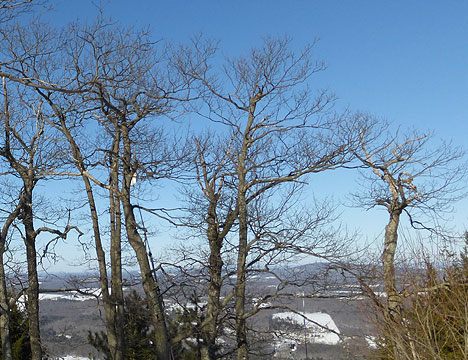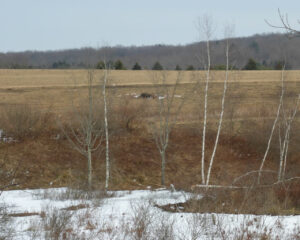Weathered
 Elk Mountain is just under 3,000 feet tall: a combination of elevation and latitude whereby the trees on the summit are just starting to show characteristics of dwarfism. The crowns of the deciduous trees that grow there are more compact than their counterparts in the valley; their limbs are shorter, thicker and more gnarled.
Elk Mountain is just under 3,000 feet tall: a combination of elevation and latitude whereby the trees on the summit are just starting to show characteristics of dwarfism. The crowns of the deciduous trees that grow there are more compact than their counterparts in the valley; their limbs are shorter, thicker and more gnarled.
There is no higher terrain between Elk and the Atlantic Ocean; it is the first thing with which weather systems collide. Winds, sometimes traveling for hundreds of miles, accelerate as they are disrupted by, and forced to overcome Elk’s steep slopes.
These winds, often bringing with them snow and ice, pummel the vegetation on the summit, exposing it to climactic conditions usually associated with regions much further to the north.
Tree line, or the elevation at which trees can no longer sustain themselves due to harsh weather, is at about 4,000 feet in the mountains of New England. There, on the highest mountains, one can hike upward through several climate zones, from the valley floor through deciduous, then boreal forests to rocky alpine peaks, essentially devoid of vegetation.
These same conditions that cause trees to keep themselves resolved against the weather, etch lines into the faces of those of us who spend a lot of time on The Hill. The youngest of us display these lines only when frowning and laughing. Temperate Spring sun will gently ease, erase these lines. By Summer, they will be all but noticeable.
For the rest of us, as season after season has accumulated, these gentle lines have etched themselves permanently into our faces; evidence of our extended presence in weather, both gentle and harsh, at elevation.


